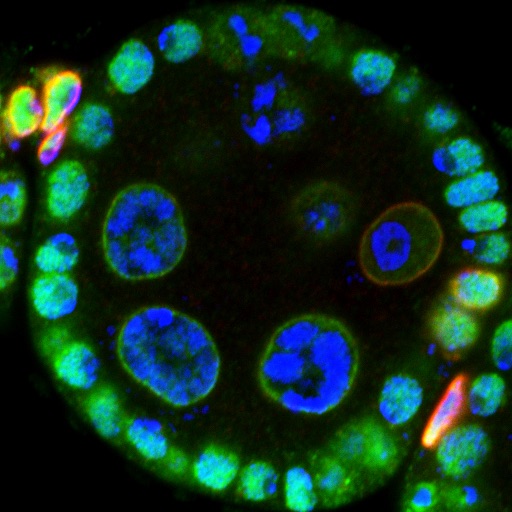Research Projects
The primary goal of our research program is to understand how germ cells ensure that the appropriate and undamaged cellular components are passed on from generation to generation, fostering their immortality. In multicellular organisms, all somatic cells age by accumulating damage and eventually meet death. Molecular mechanisms of aging are similar across species and cell types. Understanding how to reverse or mitigate cellular aging will have profound implications for potential therapies for age-related disorders in humans. In contrast to somatic cells, germ cells, which give rise to gametes, escape aging. Irrespective of the parents’ age, the gametes, egg, and sperm ensure that the next generation starts afresh, evading the effects of aging. Understanding how germ cells defy aging will help us design therapies to mitigate the various impacts of somatic cellular aging.
The gametes launch the next generation by supplying various cellular components to the zygote. The mature oocyte contributes a haploid genome and RNAs, proteins, and organelles, collectively called “maternal contribution. The oocyte’s maternal contribution is essential for launching the next generation and sufficient to reprogram a somatic cell nucleus to totipotency and reset its age. The sperm, in addition to a haploid genome, contributes centrioles. Thus, the ability to reset cellular age is likely mediated by ensuring that the maternal and paternal contributions are correct and undamaged. Our research program is interested in understanding if, how, and when parental contributions are screened for appropriate components and damage.
Emerging evidence from our lab and others suggests that various cellular components are screened to ensure germ cell-specific gene products and complexes and organelles that are damaged or from the previous generation are removed at the onset of oocyte specification. This screening of maternal contribution is also concurrent with establishing a specialized epigenetic state of the oocyte distinct from germ cells. Our lab has discovered that screening and establishing a specialized epigenetic state happen in a coordinated manner at the start of oocyte specification and have termed it germ cell-to-maternal transition (GMT). We hypothesize that during GMT, there is broad nuclear and cytoplasmic reprogramming at the onset of oocyte specification to ensure that vestiges of the previous generation are removed.
Project 1
How is transcription of new maternal components regulated?
Project 2
How are old cytoplasmic and nuclear components removed for maternal deposition?
project 3
How is the germ cell-to-maternal transition regulated?


